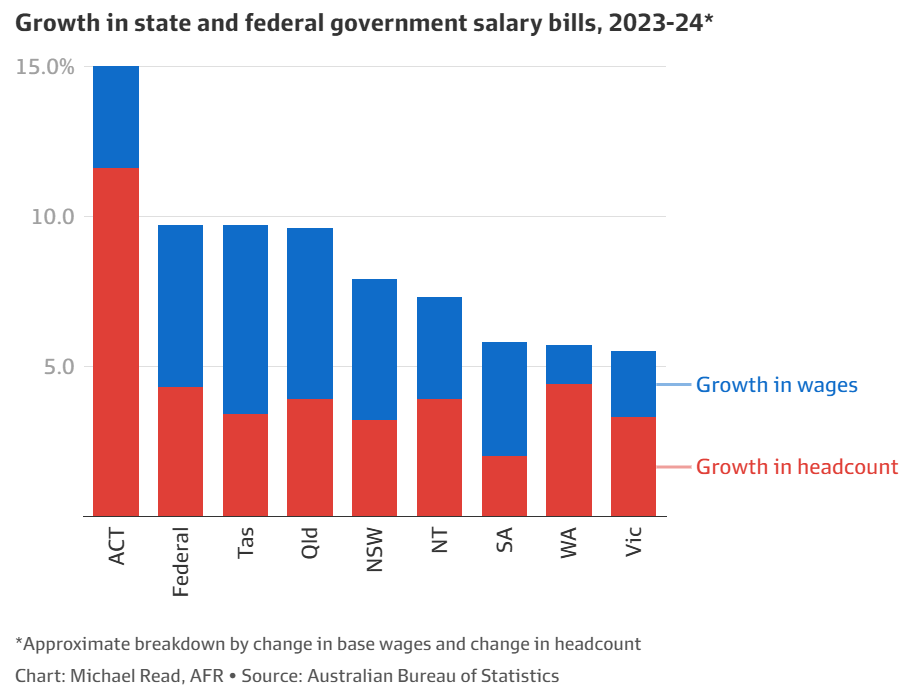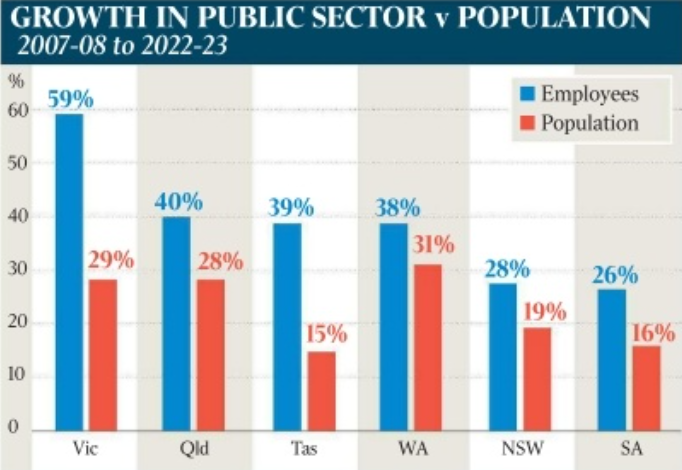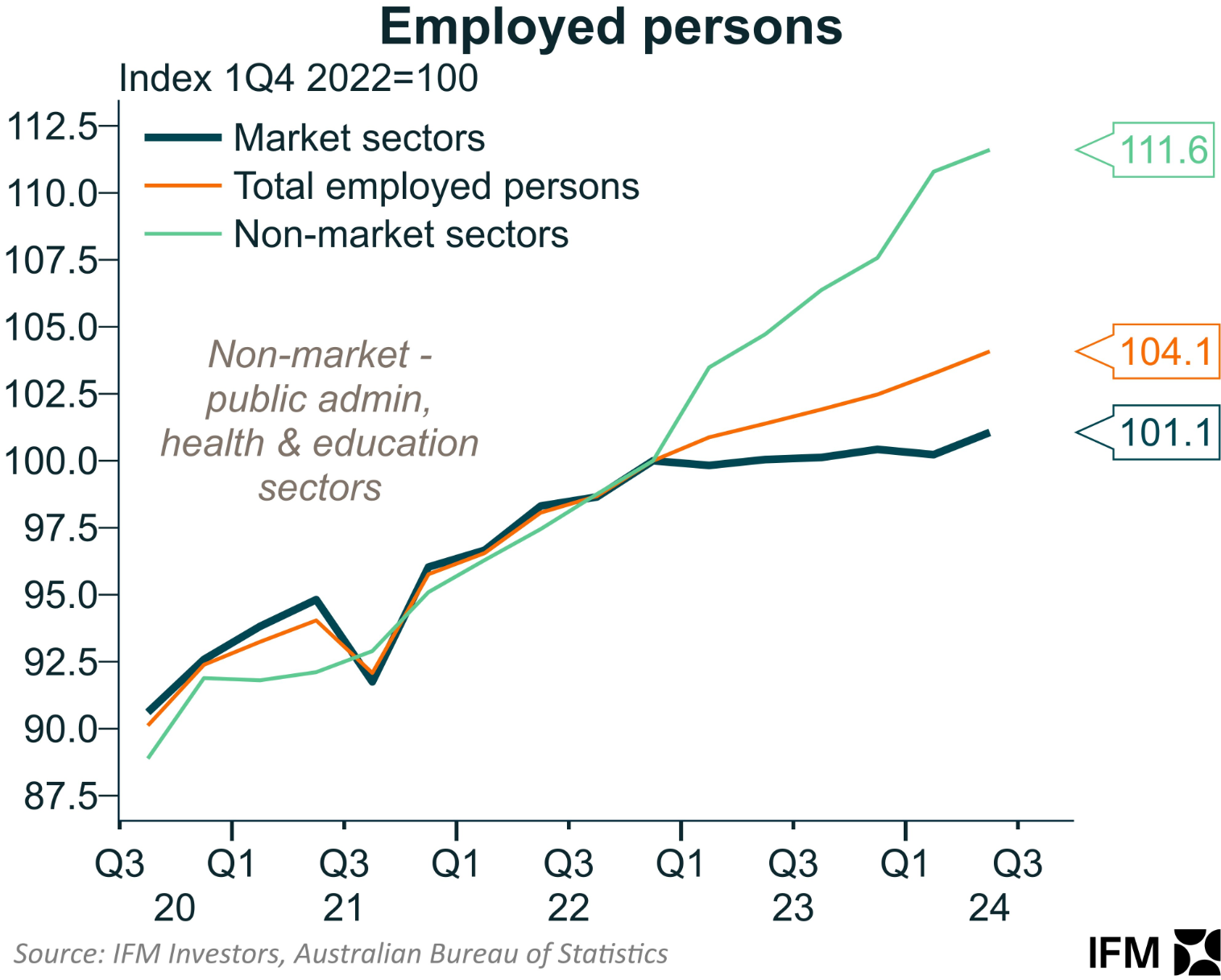Data from the Australian Bureau of Statistics (ABS) shows that the public sector wages bill increased by 8% nationwide in 2023-24 to $232 billion.
The federal government’s wage bill increased by 10% to $37.3 billion, while the number of federal public service employees increased by more than 4% to 365,400.

Only the ACT recorded a larger rise in public servant wages than the federal government last financial year, posting a whopping 15% rise in expenses, driven mainly by a surge in headcount.
Even so, the states comprised 77% of public sector employment in 2023-24, numbering more than 1.9 million workers. This reflects their primary responsibility for front-line service delivery.
Data released last year by The Australian also showed that the nation’s public service headcount expanded at a far quicker pace than population growth over the 15 years to 2022-23:

Source: The Australian
The public service wage bill also surged over the same period:

Source: The Australian
UBS chief economist George Tharenou told The AFR that public sector wages had more than doubled since 2008-09, which was the last time wages increased by more than 8% per year.
“Overall, the recent strength in public employment is largely offsetting the weaker trend in private employment, and hence keeping the overall labour market remarkably resilient, and relatively tight”, he said.
The impact of public spending on the labour market is even more extreme when we consider the non-market (government-aligned) sector, which includes private companies whose funding is mainly derived from government spending.
As illustrated in the following chart from Alex Joiner, chief economist at IFM Investors,

Since Q1 2022, just before the Albanese government came to office, overall employment across the Australian economy has grown by 4.1%.
Nearly all of this job growth has come from the non-market (government-aligned) sector, where the number of jobs has expanded by an extraordinary 11.6%. Much of this job growth is related to the National Disability Insurance Scheme (NDIS).
In comparison, job growth across Australia’s market sector has stagnated, growing by only 1.1% over the same period.
The surge in government-funded jobs is one of the reasons why public spending hit an all-time high of 27.3% of GDP in Q2 2024 and is projected to increase further in the period ahead.

Public sector spending is propping up Australia’s economy and labour market.

